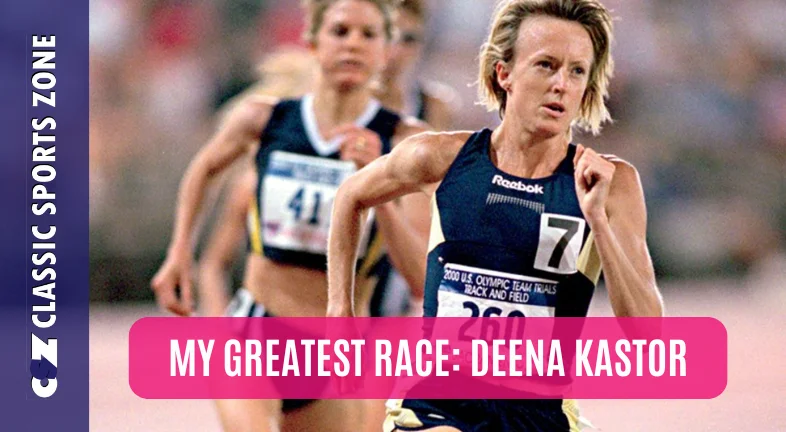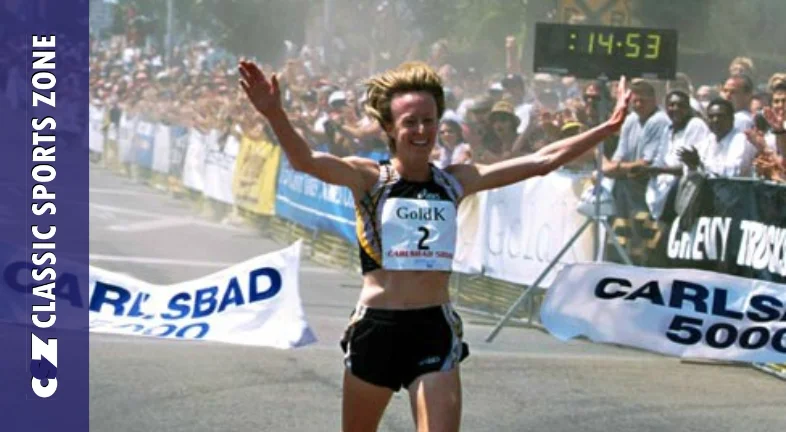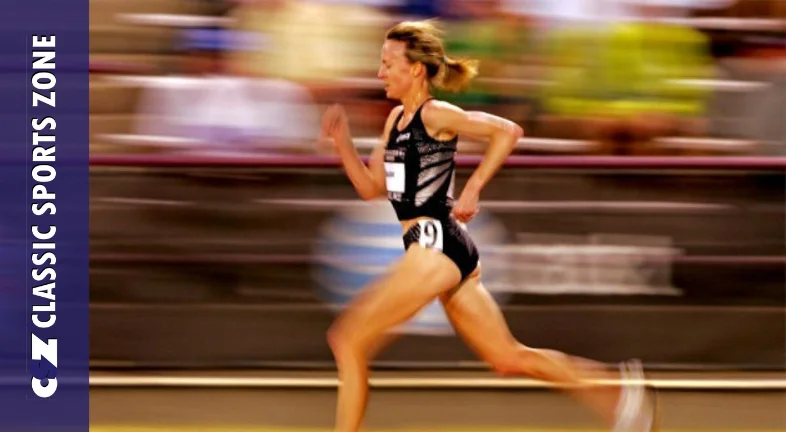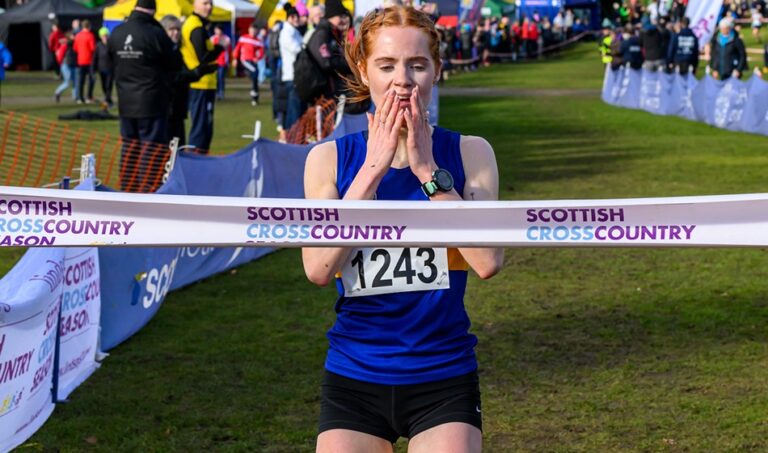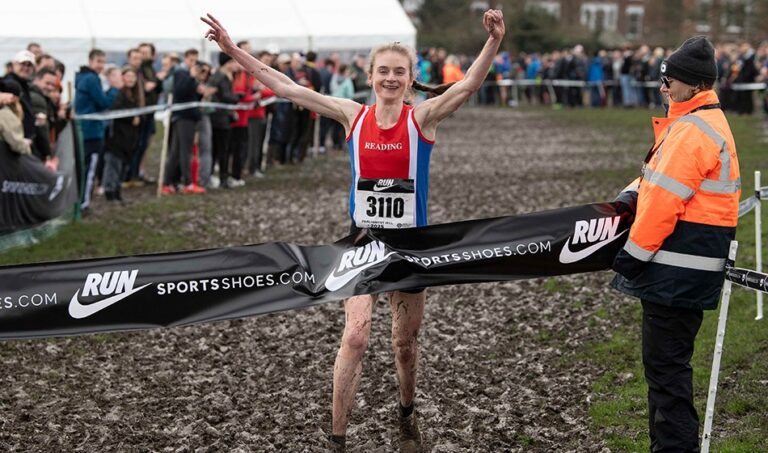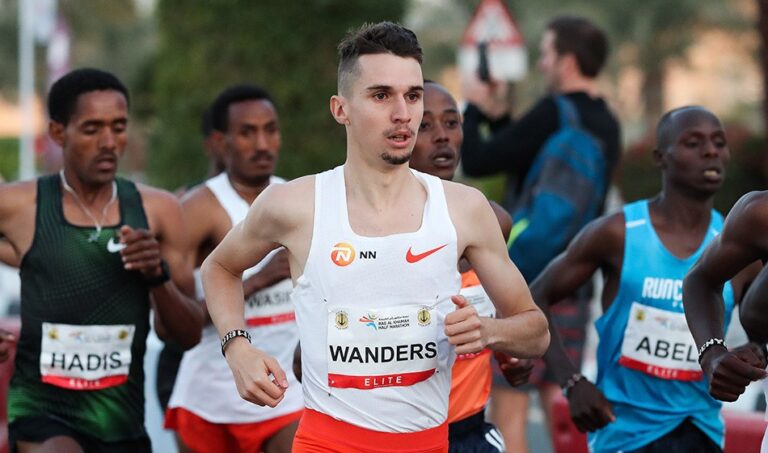
Olympic marathon medallist and former London Marathon winner looks back on winning the Carlsbad 5000 in April 2002 in 14:53.8
Carlsbad was always traditionally the weekend after the World Cross Country Championships so it was always a party by the sea. The best of those from the World Cross would end up in San Diego, on the beach, collecting seashells. It was the last race of the winter season so you could just lay it on the line after a relaxing week in southern California.
Olympic Race
I’d been at the World Cross in Dublin and came second to Paula Radcliffe. It was my first World Cross medal and I finished that race just excited to be on the podium. I was sprightly and jumping up and down but when I looked over and Paula had her hands on her knees and I saw how spent she was, I was like: “Oh, I didn’t give it everything.” So the next weekend, I was like: “I’m not going to pace this, I am just going to tear off this starting line and be all out from the gun. It’s only 3.1 miles, 5km.”
I didn’t have jet lag. Maybe I was waking up at three o’clock in the morning but then I would take a three-hour nap in the afternoon. It was just such a leisurely week in between, not having a lot of responsibility. It also seemed pretty easy.
My husband is also my physio so he would work on me every morning before races. He’d set up his massage table, warm up his hands by rubbing them together and then put them on my legs to start working. This time, he took them off. And he said: “I don’t need to do anything.” I was like: “What do you mean?” He told me he wasn’t doing anything, that I was good to go. He felt this electrical pulse and thought ‘she doesn’t need a thing’.
Those are really the days that runners chase – when we have a little bit of that runner’s high and we feel like we can go on a pace forever. We just get into this beautiful flow when we’re running – a great effort which feels effortless.
We don’t get it very often. We lace up our shoes, hoping that it’s going to arrive. This was just one of those magical days and, from the second the gun fired on the streets of Carlsbad, I just tore off and rode that red line for the entire time.
Deena Kastor and Paula Radcliffe in Dublin 2002 (Mark Shearman)
Running has so many sports within it. We have indoor track and cross country, outdoor track and road racing – and then the marathons kind of in a category of their own. Cross country, I feel, offers you a grit and a strength that no other denomination of this sport can offer. It gets in your ankles and feet and hips and it really does transfer on to the roads.
You have those intrinsic muscles working in your favour. It offers an overall strength, something similar to weightlifting and some of that ancillary work you might do in the gym. I always felt that if I incorporated cross country training into my marathon training, I always had my best marathon build-up.
It’s really important whether you have a good day or a bad day to see how you could use what you’d learned in that moment. It’s why I liked to write a journal and keep a physical training log so that I could sit and be a little more cerebral about what I learned, instead of just saying that was a good race or a bad race.
You also feed off the energy from the crowd when you’re road racing. I did some of my build-up at the Olympic Training Centre just outside of San Diego so a lot of the other athletes from there came up to see me race in Carlsbad. My family lives north of Los Angeles so they came down as well.
I had a lot of support there and a reason to celebrate with them at the at the finish line if I could break a record. The announcers were doing a good job letting people know that I was on American record pace, and then world record pace.
I was looking at my watch and hearing the splits. Someone said: “She’s not going to be able to keep this split for the second mile because it’s slightly uphill.” And then they went: “If she holds this pace for another mile, she’s going to be under world record pace.” It was all really getting people fired up on the sidelines.
I don’t even know if I was wearing a watch. To me that was secondary to just trying to press those limits. I kept looking at the press truck and was trying to reel it in as fast as possible. I used the same tactics at the London Marathon when I broke Joan Samuelson’s American record in 2003. And I did it again when lowering my own record in 2006, looking at Big Ben on that long stretch along the River Thames – just lassoing Big Ben and pulling it in as fast as I could.
It was Paula Radcliffe’s world record that I had broken in Carlsbad, so it felt a little bit like redemption for losing to her in Dublin.
But it could have been a 10km that day and my legs just would have continued to go that fast. It could have been a half-marathon. I don’t know about a marathon but it was as fast as my legs could neuro-muscularly take me in that timeframe.
It felt so exhilarating to run that like it was nothing. There was no restraint on me whatsoever. It was just this fluid start to finish without any hiccup whatsoever. It felt so good to run with that type of exertion. I didn’t feel taxed, even at the finish line. It was just as fast as I could possibly go.
HANNAH COCKROFT STRIKES AGAIN AT WORLD PARA CHAMPS IN KOBE


